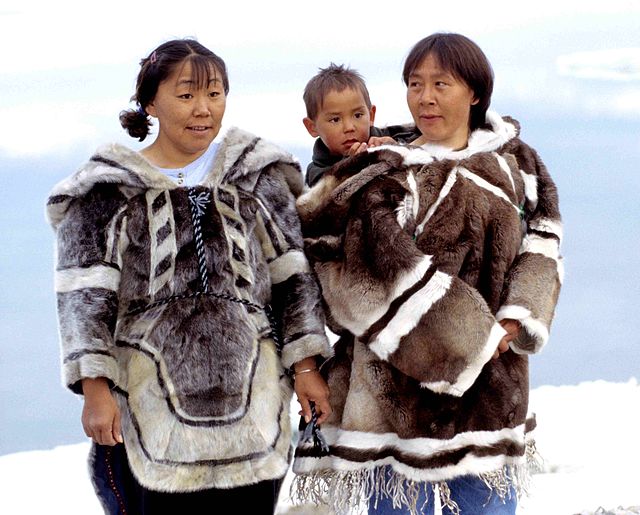The Inuvialuit or Western Canadian Inuit are Inuit who live in the western Canadian Arctic region. They, like all other Inuit, are descendants of the Thule who migrated eastward from Alaska. Their homeland – the Inuvialuit Settlement Region – covers the Arctic Ocean coastline area from the Alaskan border, east through the Beaufort Sea and beyond the Amundsen Gulf which includes some of the western Canadian Arctic Islands, as well as the inland community of Aklavik and part of Yukon. The land was demarked in 1984 by the Inuvialuit Final Agreement.
Eileen Jacobson, Inuvialuit guide
Traditional Inuvialuit whaling camp near Tuktoyaktuk
Inuit are a group of culturally and historically similar Indigenous peoples traditionally inhabiting the Arctic and subarctic regions of North America, including Greenland, Labrador, Quebec, Nunavut, the Northwest Territories, Yukon (traditionally), Alaska, and Chukotsky District of Chukotka Autonomous Okrug, Russia. Inuit languages are part of the Eskimo–Aleut languages, also known as Inuit-Yupik-Unangan, and also as Eskaleut. Inuit Sign Language is a critically endangered language isolate used in Nunavut.
Iglulingmiut Inuit women and child in traditional parkas (1999)
A European ship coming into contact with Inuit in the ice of Hudson Bay in 1697
An anonymous 1578 illustration believed to show Kalicho (left), and Arnaq and Nutaaq (right)
Hudson's Bay Company Ships bartering with Inuit off the Upper Savage Islands, Hudson Strait, 1819






